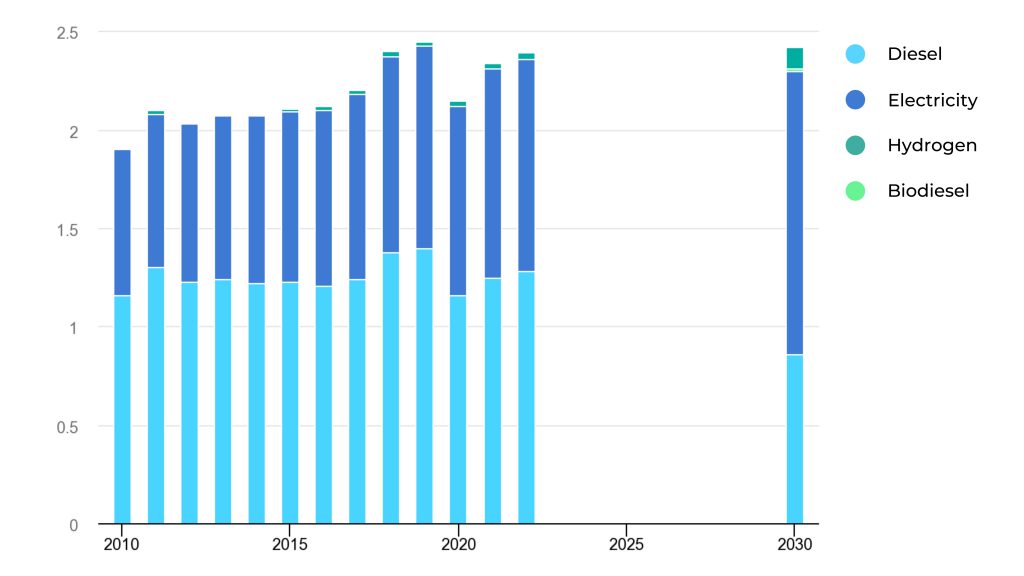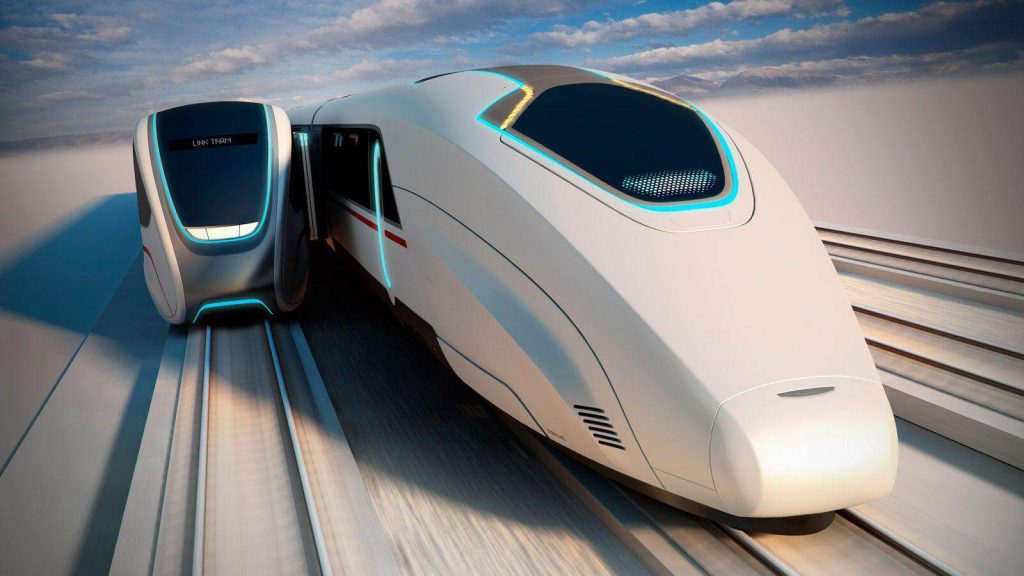Over the past decade, high-speed rail infrastructures have experienced rapid expansion, paving the way for convenient and low-emission transportation within and between cities. Rail emissions per passenger kilometer are currently around one of the lower in the travel industry. When electrified passenger rail is powered by renewable or nuclear energy, emissions become even lower, making it a promising mode of mass transport. In fact, rail transport has the potential to be one of the most energy-efficient and eco-friendly options available.
Investment in the global transport market for rail is considered one of the best options due to its low energy and CO2 intensities.
The current energy mix of rail primarily comprises diesel and electricity, with diesel consumption accounting for 53% of total final energy demand and electricity at 45% in 2022. By 2030, it is projected that electricity will constitute 60% of total energy demand, while diesel will still account for over a third and biodiesel for the remaining share.
Global coordination is crucial for the evolution of the railway sector. Each country, according to its technical and financial capacity, works on the development of the industry, which will ultimately benefit the sector as a whole.

Source: IEA, Energy consumption for rail by fuel in the Net Zero Scenario, 2010-2030, IEA, Paris
Worldwide, rail development is taking place at different scales. China, for example, has developed an extensive rail network of 155,000 km, of which 42,000 km is dedicated to high-speed railroads. Over the past 20 years, China’s high-speed rail network has expanded considerably and is set to reach 50,000 km by 2025. This expansion will not only enhance mobility but also lead to a shift in transportation modes and a reduction in oil demand.

In Europe, collaborations have led to innovative developments. Hitachi from Japan and Italy’s Trenitalia introduced the FrecciaRossa 1000 high-speed train in Italy in 2015, which has since been operating in France and Spain, contributing to the expansion and improvement of the European railway market. Moreover, a new high-speed hybrid train, capable of switching between battery, electric, or diesel, and operating on electrified and non-electrified lines, further modernizes the European rail industry.
India is also making significant strides towards sustainability. The country is investing in shifting from road transport to rail and is rapidly approaching its target of 100% rail track electrification by 2024. Between 2015 and 2022, the share of electrified tracks in India increased from 45% to 80%.
Rail transport holds immense potential for a sustainable future. As countries around the world continue to invest in and develop their railway infrastructures, global coordination and collaboration will play a pivotal role in driving the railway sector on top of the travel industry. By embracing innovative technologies, we can further enhance the efficiency, comfort and environmental friendliness of rail transport, paving the way for more sustainable and enjoyable journeys.
We aim to support rail companies in this digital and ecological transition with our innovative solutions.



